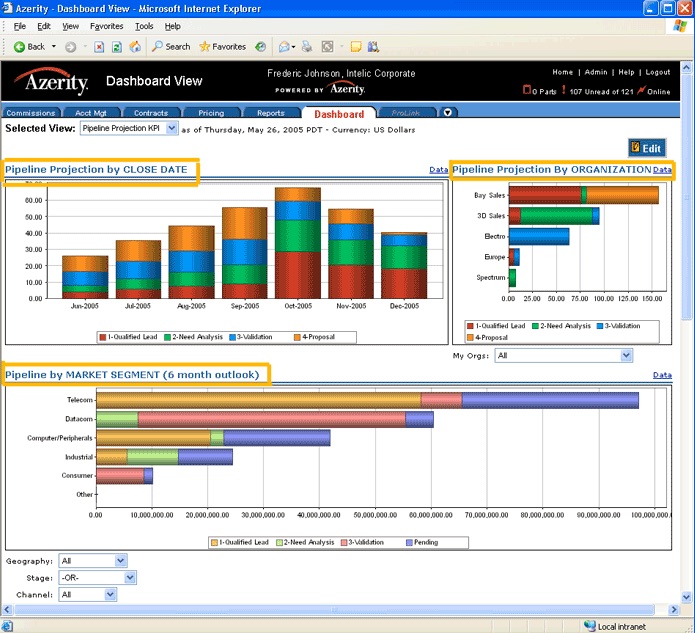After all the creativity, work, blood, sweat, and tears that go into a successful marketing campaign, your work is not done until you have measured the campaign’s impact to learn where it succeeded and where it didn’t. Every campaign represents a significant investment of resources, so if you don’t take the time to learn from your campaign before moving on, you are losing a substantial part of that investment. Also, an effective campaign may contain tactics that you can use again—but you’ll want to know which ones worked. Think about it: every campaign you run can make you smarter!
The specific things you’ll learn in this section include:
- Discuss the importance of measuring marketing communication effectiveness
- Identify key performance indicators (KPIs) that are useful for measuring the effectiveness of marketing communications
Why Measure?
Measurement is an important aspect of marketing campaigns and other marketing activity. Measurement makes some people very nervous because it brings accountability into marketing activity. In fact, this step can be one of a marketer’s best friends. If you don’t measure the impact of your marketing efforts, you’ll have no idea whether what you are doing is effective or not. On the other hand, if you do measure the impact, it will help you understand what is working, and where and how to improve your efforts. By nature, marketing is a dynamic field because markets change and people change. What works beautifully this year may be a complete flop next year, and vice versa.
Measurement–and the results or “metrics” this process collects–are like a compass that helps marketers adjust course so they can reach their goals more quickly and effectively.
Deciding What to Measure
Measuring just for the sake of having numbers misses the whole point. It’s actually essential to determine the right things to measure first, if you want to get a relevant picture of what’s happening. To do this, marketers typically go through a process of identifying key performance indicators (often called KPIs). A KPI is something measurable that indicates the progress an organization is making toward its business objectives. The KPI is not the same as the actual company goal or objective; instead it is something measurable that helps managers understand how well they are progressing toward the goal.
To understand the importance of KPIs, let’s say you are a track coach who wants to capture data about the sprinters on your team. You could measure all sorts of things about the athletes: their shoe size, how many cups of sweat they produce during a typical workout, how fast their hearts beat during a race, and so on. Would all those measurements be key performance indicators? Maybe not. You might decide that the key performance indicators for sprinters are their best running times and their average running times (or something else).
In a company, KPIs can be determined for many different levels of the organization. These are described below:
- Company-level KPIs indicate the overall company performance on company-wide goals, in terms of total revenue, profitability, customer-satisfaction rating, market share, or percentage of growth in the customer base.
- Department-level KPIs track performance at the department level. For the marketing department, it might be brand awareness, the number of qualified new leads generated, cost per lead generated, or the conversion rate: the percentage of leads who are converted into customers.
- Team-level KPIs track the impact and effectiveness of a team’s activities. A team focused on digital marketing, for example, might track KPIs such as email-marketing click rates, the number of Web-site visits, or SEO sales conversion rate: the percentage of individuals who come to the Web site via a search engine and result in a sale.
- Campaign-level KPIs track the impact of individual campaigns. By tracking similar metrics across multiple campaigns, it is easy to see which ones are most effective with target audiences and then use this information to refine tactics and replicate successful approaches. Campaign-level KPIs are somewhat dependent on the campaign design; for example, campaigns typically track the “open” rate: i.e., how many people open an email message once it is delivered. If a campaign doesn’t use email, the open rate doesn’t exist. However, there are some “common denominator” campaign metrics marketers can track across IMC activities to determine impact and progress. Cost per impression, impressions per campaign, and conversion rate are metrics that can be tracked for virtually any campaign.
- Marketing tactic-level KPIs track the effectiveness of individual marketing tactics and tools. For example, content-marketing KPIs track the effectiveness of individual content pieces used on a Web site and in IMC campaigns. These metrics, such as page views per article and number of social media shares provide insight for marketers about which types of content are most popular with target customers and which content pieces get little interest.
Different companies select different sets of KPIs, depending on what they are trying to accomplish and the strategies they are pursuing to reach their goals. At any given level, it is important to limit the total number of KPIs to those that are most essential and indicative of progress. If too many things are measured, managers have trouble prioritizing and homing in on what is most important. In addition to KPIs–which represent key, strategic indicators of progress–a company may also track a variety of other metrics to inform its operations.
Alignment with Goals and Objectives
Figuring out what to measure starts with considering the organization’s overall goals and objectives, as well as the marketing team’s goals and objectives. The highest-level KPIs should tell managers about how well marketing is doing at meeting its goals as a team, and how the team is contributing to the organization’s overall performance. KPIs may reflect absolute figures, such as total market share. Or they may track progress toward a target, such as progress toward achieving 1,500 new customers over the course of a year. KPIs should provide information to guide managers in their decision making about what is working and where to adjust course.
It is helpful for an organization to define a standard set of KPIs for measuring the effectiveness of marketing campaigns and for the contributions made by different functions within the marketing organization: public relations, advertising, social media marketing, etc. When marketers define S.M.A.R.T. goals at the outset of a campaign, these goals may incorporate KPIs to confirm what the campaign aspires to achieve and how well it does at achieving these goals. KPIs for awareness-building campaigns, for example, should be focused on campaign reach, such as number of impressions or post-campaign brand awareness.
Managers should be attentive to how many KPIs they are tracking to ensure that measurement remains a useful activity rather than a burden that cuts into the productivity and effectiveness of the broader team. Fortunately, as marketing becomes more data rich and technology driven, many KPI-type metrics are calculated automatically by systems that support the marketing function, making them readily available. Tools are also available that create dashboards for marketing managers and team members to help them easily monitor KPIs on an ongoing basis.
Defining the Metric
Every marketing metric or KPI requires some type of measurement, and it should be based on legitimate data. When marketers define a KPI, they should also define what data will be used to calculate the KPI, as well as the source of that data. At times, different people or teams might have different assumptions about how to calculate the metric, so it is wise to clarify this during the definitional stage.
It isn’t uncommon for people to identify KPIs and then discover that they don’t have ready access to the information needed for measurement. This can be a good motivator for defining a process to obtain that information. Or it can be a cue that perhaps a different KPI based on more readily available information would be a better option.
When to Measure
When to measure depends on what is readily available for marketers and managers to track and maintain. If it takes a lot of manual effort to generate a KPI report, or managers are spending hours per day or week compiling and reporting metrics, it could significantly cut into productive work time—and it might be wise to investigate alternatives. Fortunately, CRM and other systems that build KPI dashboard reports into their regular, day-to-day functions are readily available. In these cases, systems automatically calculate KPIs, which makes them easy to monitor over time and adjust course as needed. Typically managers should monitor KPIs at least once per quarter, in order to gauge progress and learn what’s working and how to improve.
Campaign Metrics Case Study: Citizen Watch
Citizen, one of the world’s largest makers of wristwatches, embarked on a digital marketing strategy to build its brand using social media, with a specific focus on expanding its presence on Facebook. The marketing team’s goal for the first year was to gain 100,000 followers on Facebook. Their campaign strategy focused on offering engagement opportunities that pushed people to Facebook to interact with the brand. It incorporated a combination of tactics that included offline and online elements, such as a series of register-to-win contests like a “Win Your Mum a Watch” giveaway. It also offered related online engagement opportunities, like interactive photo galleries on the company Web site for people to browse, with new products to view and share on social media.
To help gauge their progress and understand how well different dimensions of the campaign were working, they tracked a variety of metrics, with one KPI being the number of Facebook followers. Over the course of the campaign, they had impressive results. In addition to blowing through their goal of getting 100,000 followers, Citizen saw the following results from consumers who participated in campaign activities:
- 76 percent lead-submission rate
- 82 percent app-completion rate
- 26 percent social-share rate
By tracking these metrics across different offers and campaigns, Citizen was able to gauge which activities were the best received and use this information to improve the effectiveness of future campaigns. The company has used these insights to expand promotional activities to other forms of social media and other types of engagement activities.
CC licensed content, Original
- Examples of Key Performance Indicators. Authored by: Melissa Barker. Provided by: Spokane Falls Community College. License: CC BY: Attribution
- Measuring Marketing Communication Effectiveness. Authored by: Lumen Learning. License: CC BY: Attribution
CC licensed content, Shared previously
All rights reserved content
- What Are Key Performance Indicators (KPIs)?. Authored by: Bernard Marr. Located at: https://youtu.be/9Co8slUvYj0. License: All Rights Reserved. License Terms: Standard YouTube license




